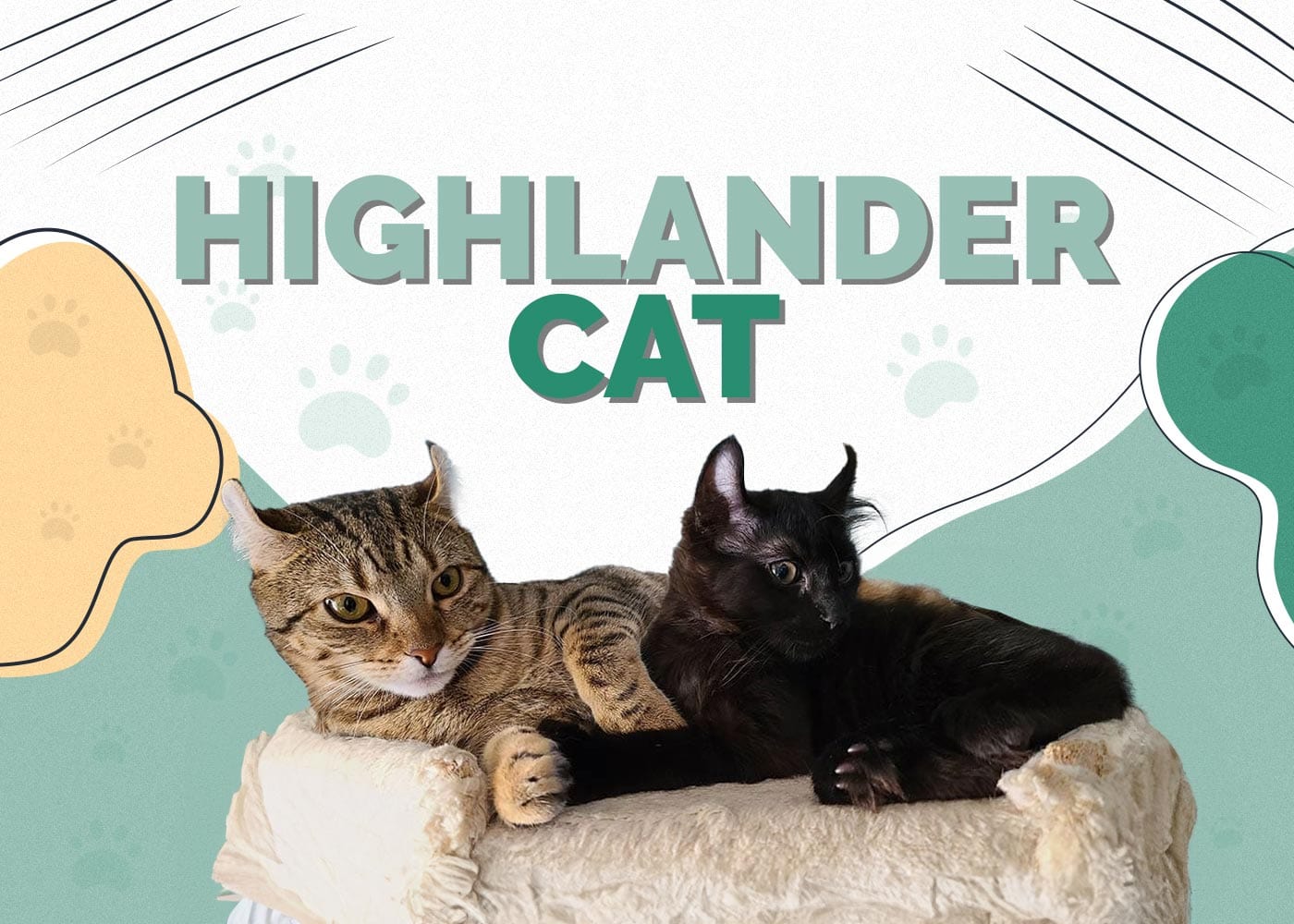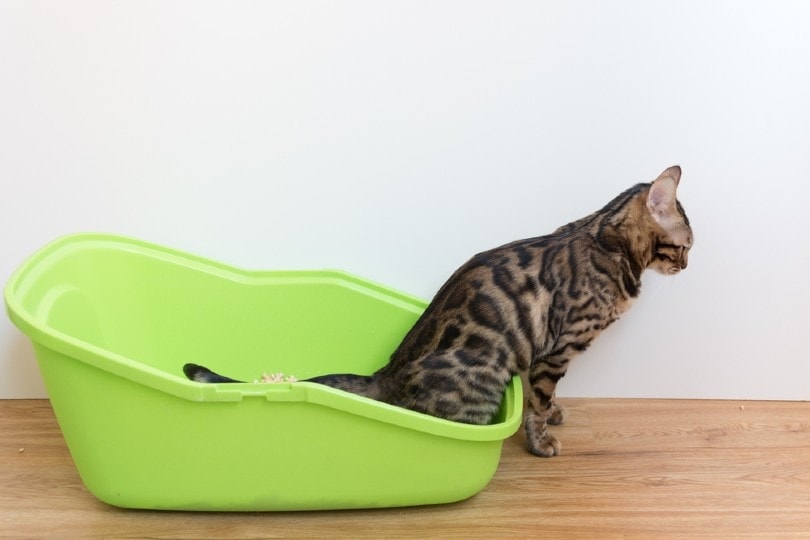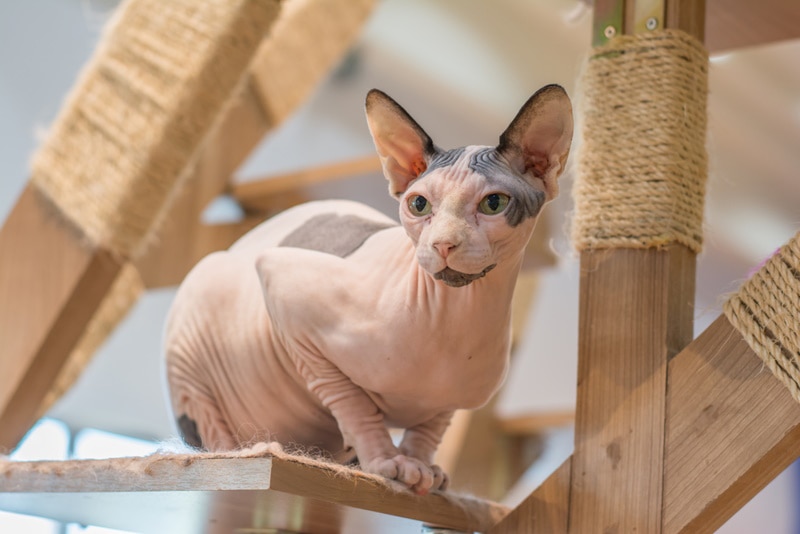Are Bromeliads Toxic to Cats? Vet-Reviewed Health & Safety Guide

Updated on
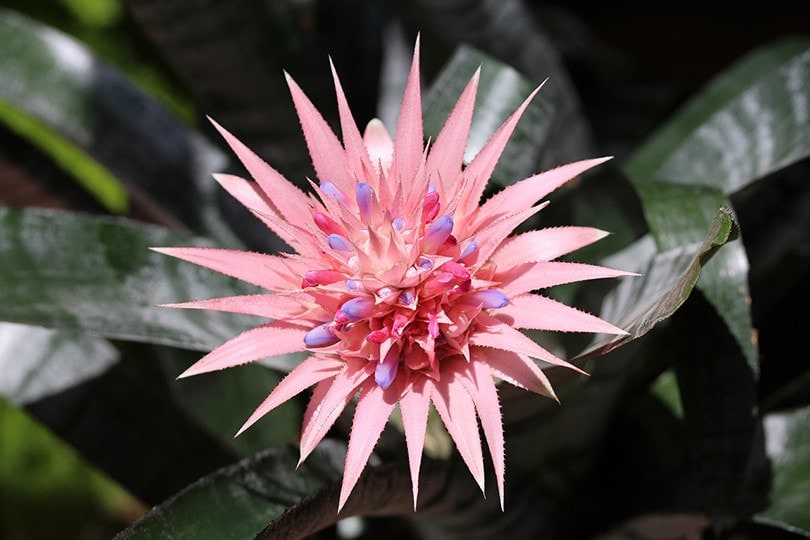
Cats are eccentric animals, and sometimes their curiosity leads them to munch on your house plants. Numerous plants and foods are toxic to your cat, but thankfully, bromeliads are safe to keep in your home.
Bromeliads are attractive flowering plants that include over 3940 species. Some of the most common bromeliads include Ananas, Billbergia, Guzmania, Tillandsia, and Cryptanthus. Although they’re non-toxic to felines, bromeliads can cause vomiting or diarrhea if your pet consumes too much. It’s unlikely that your pet will gorge itself on your houseplants if you provide a balanced diet and plenty of cat toys, but you may see your furball nibble on a leaf or stem.
Non-Toxic Plants and Flowers That Are Safe for Your Cat
When you’re shopping online or browsing the nursery for houseplants, you can ensure your selections are safe for your feline by referencing the ASPCA’s list of toxic and non-toxic plants. The list is so immense that it can seem overwhelming, and it’s likely to grow larger as more species are identified and studied. Some plants favored by gardeners, like lilies or sago palms, are highly toxic to felines, but you can find hundreds of indoor species that will not endanger your pet. Here are some of the most common non-toxic plants:
- Bromeliad
- Bamboo palm
- Spider plant
- Cast Iron
- Boston fern
- Marigold
- Money tree
- African violet
- African daisy
- Bottle palm
- Burro’s Tail
- California Pitcher plant
- Camellia
- Orchids
- Feather palm
- Haworthia
- Rubber plant
- Polka Dot plant
- Rose
- Venus Fly Trap
When you buy a new plant, you may have to modify the container to keep your kitty safe. Sometimes, garden centers will leave sharp stakes or identification tags attached to the branches. Remove any plastic or wood pieces that could cause your pet to choke and be sure to rinse the plant thoroughly to remove residue from fertilizer. Most indoor plants are not saturated with fertilizer pellets like outdoor plants, but it’s best to clear the topsoil of any chemical fertilizers to prevent an adverse reaction. You can add a few handfuls of natural mulch or Spanish moss to protect the top layer and keep your cat from digging into the soil.
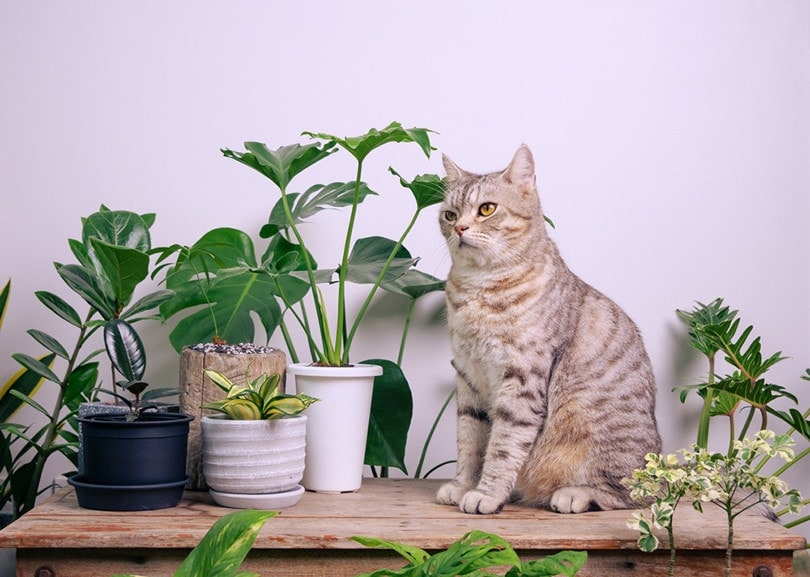
Preventing Your Cat from Eating Houseplants
Some cats are attracted to the fragrance of houseplants, and others may decide to sample your flora out of boredom. A few nibbles on a plant are unlikely to harm your pet or the plant, but you can take steps to ensure your feline does not regularly feast on the colorful displays in your home.
- Purchase Cat-Friendly Grasses and Herbs – If your feline is an avid plant muncher, you can offer healthy alternatives to house plants that are less likely to cause digestive issues. The aroma from catnip can give your pet a burst of energy, but the fresh leaves can also be consumed. Some cats experience a sedative effect after eating the plant, but it usually lasts only twenty minutes or less. Cat thyme, cat mint, and alfalfa grass are also excellent options, and some species may even benefit your pet.
- Keep the Plants Out-of-Reach – Some cats can leap great distances, but you can place your plants in elevated areas to prevent your pet from bothering them. A small shelf may offer some protection to your plant if your cat cannot reach the location, but hanging baskets are the best and cheapest solution. When installing a hanging basket on your ceiling, be sure to screw the hook into a stud to keep it secure.
- Use a Pet-Friendly Deterrent – Pet stores and online distributors carry cat deterrents that can keep your cat from munching on plants, but you should double-check the product’s description to ensure it is suitable for indoor use. Many outdoor deterrents have strong odors and are not pleasant to use inside your home.
- Set Aside Time for Your Pet – Indoor pets are more likely to become overweight than outdoor kitties, but exercise benefits more than just your cat’s physical health. Cats need mental stimulation, and if you cannot set aside time to play with your cat, your pet may turn its attention to your houseplants for entertainment.
Toxic Plants to Avoid in Your Home
Although your pet may not touch a toxic houseplant, it’s better to remove it from your home than risk a trip to the vet. You can find several online tips for cat-proofing your poisonous plants so you can display them in your home, but these suggestions are not 100% effective. The only way to keep your pet from ingesting hazardous toxins is to donate or dispose of all poisonous species. ASPCA’s list contains many plants to discuss, but you should avoid keeping these plants in your home at all costs.
- Yew
- Oleander
- Sago Palm
- Lily
- Lantana
- Narcissus
- Cyclamen
- Rhododendron
- Tulip
- Dieffenbachia
- English Ivy
- Lily of the Valley
- Pothos
- Cannabis Sativa
Several toxic plants, such as lilies, cyclamen, and rhododendrons, are favorites of horticulturalists and home gardeners, but they’re not special enough to have in your home with your cat. The non-toxic list is almost as long as the poisonous list, and you can find numerous plants (violets, daisies, ferns, etc.) that add color to your home and purify the air.
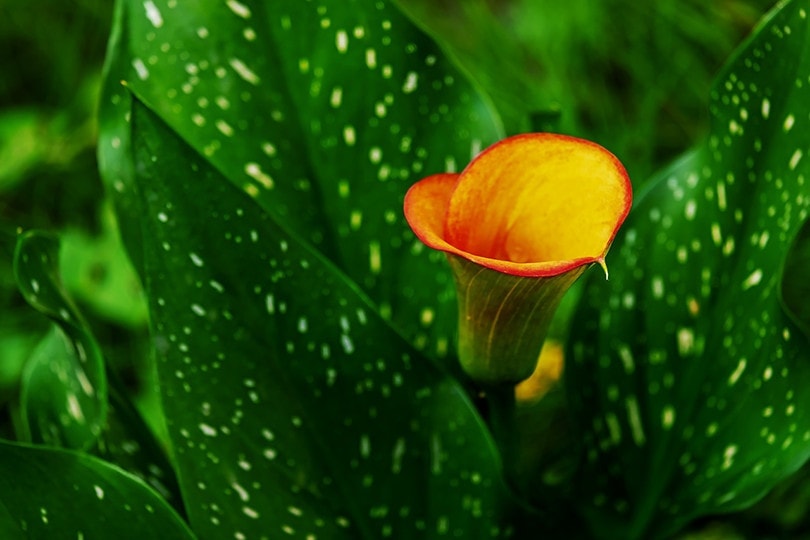
Conclusion
Bromeliads are a colorful family of plants that include thousands of species, and thankfully, they’re non-toxic to your curious kitty. While bromeliads and other non-poisonous plants are safe to keep inside, be sure to remove any plants that your pet frequently chews. Too much plant fiber in your cat’s digestive system can cause diarrhea or vomiting, and a chewed-up plant is more likely to wilt and die if too many leaves are removed. If you provide healthy cat grasses, a balanced diet, and daily exercise, your cat may be less motivated to munch on your beautiful houseplants.
Related Reads:
- Are Peonies Poisonous to Cats? Keeping Your Cat Safe
- Is Monstera Toxic to Cats? Everything You Need to Know
Featured Image Credit: Chesna, Pixabay


